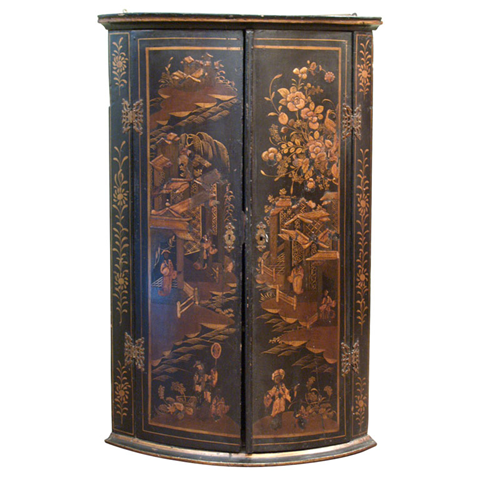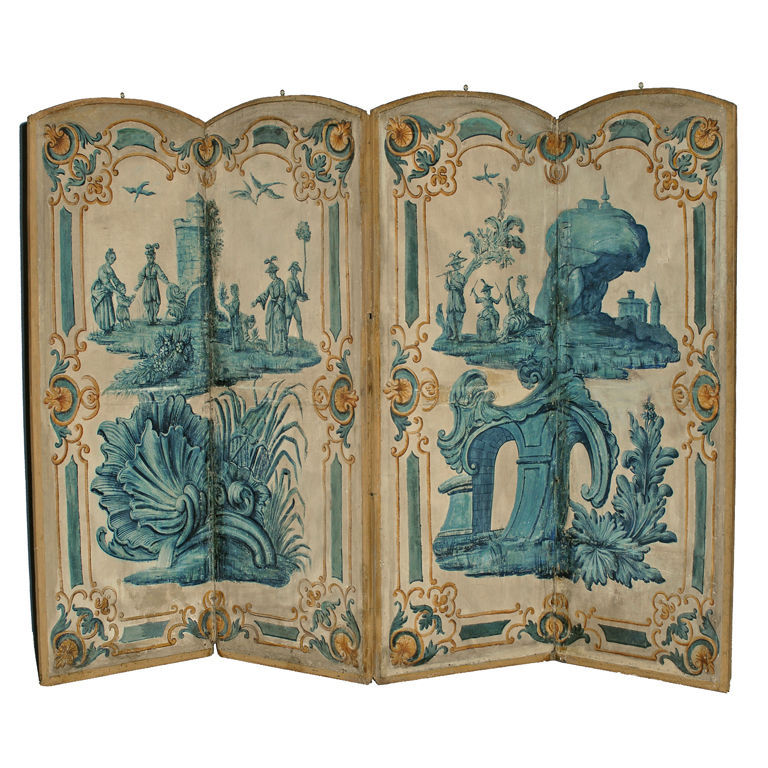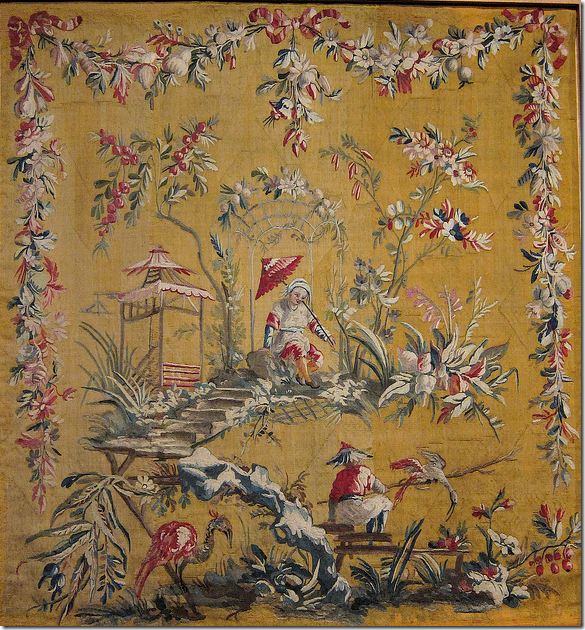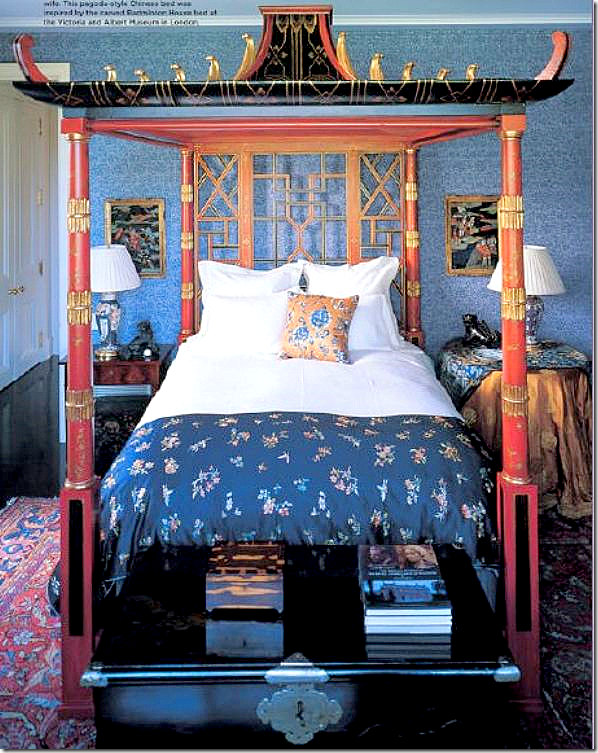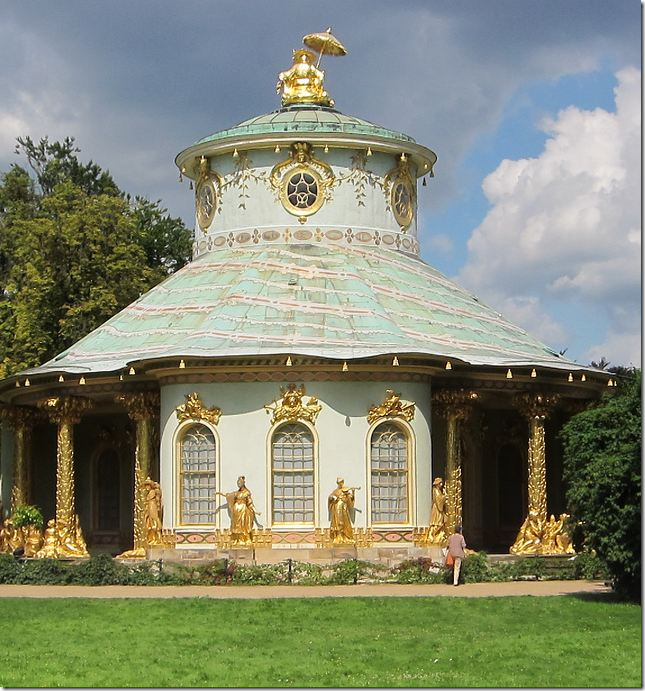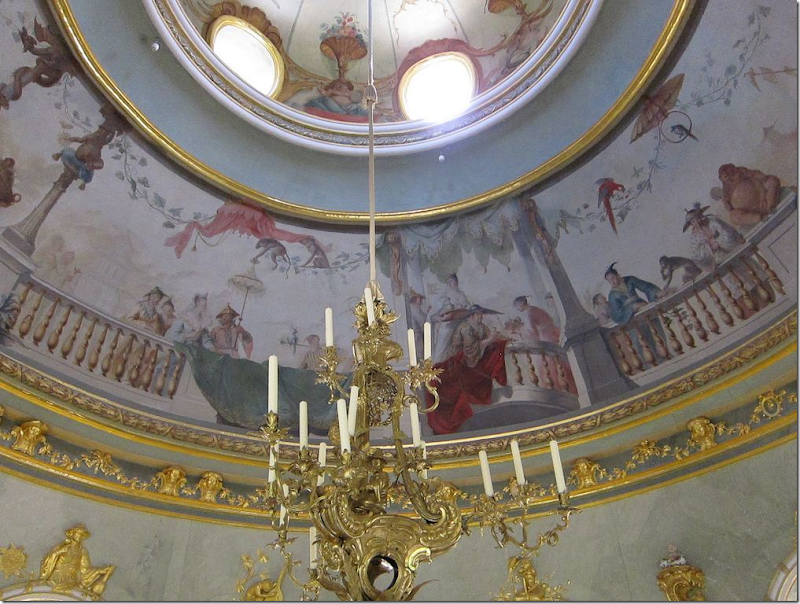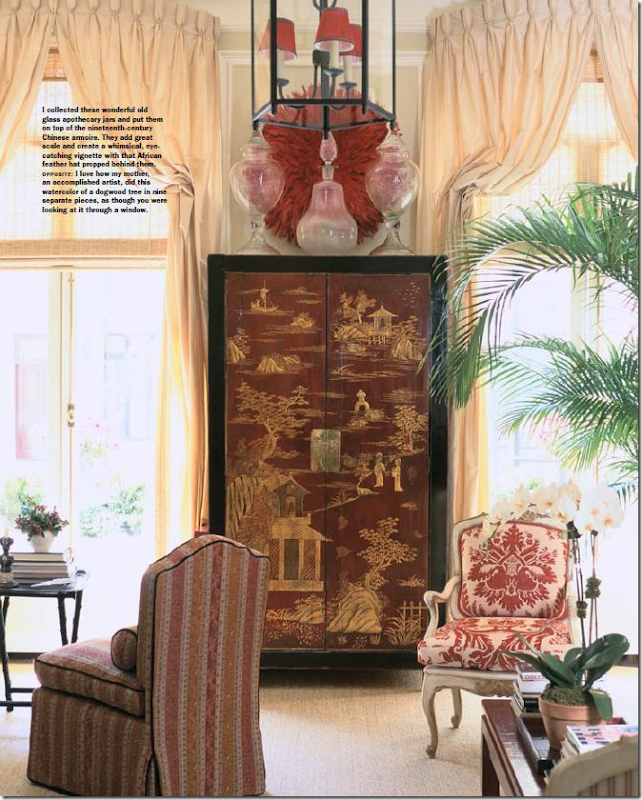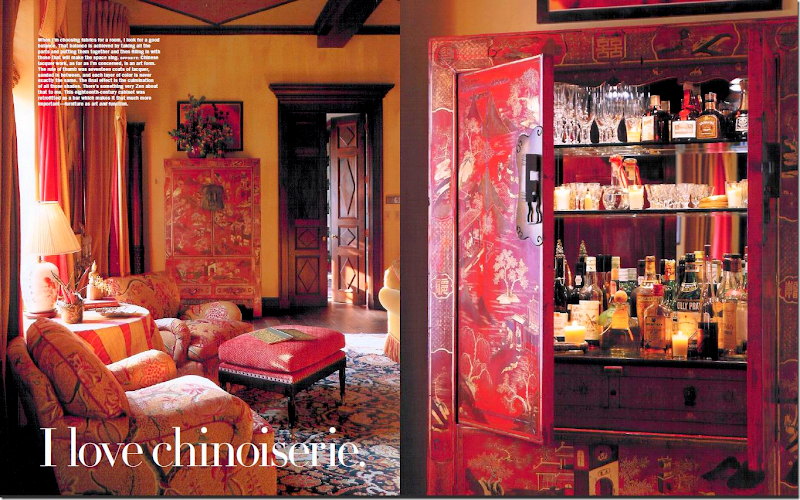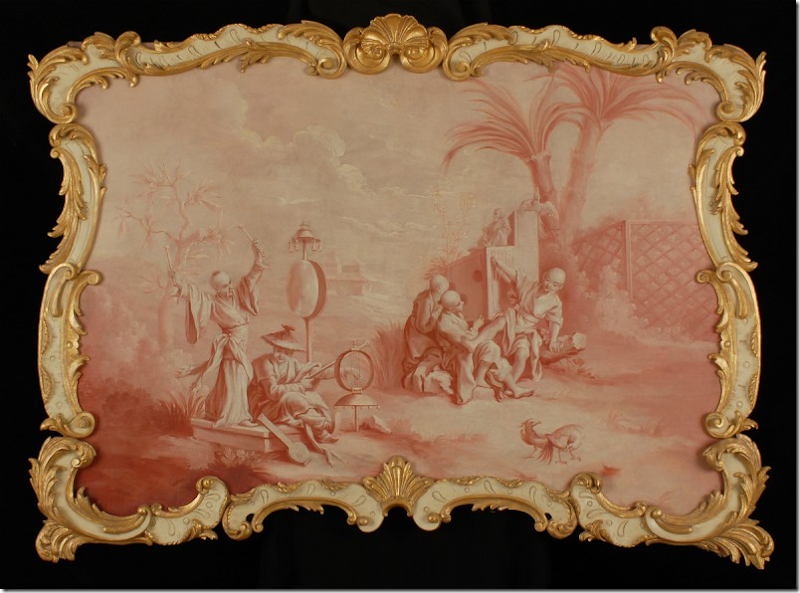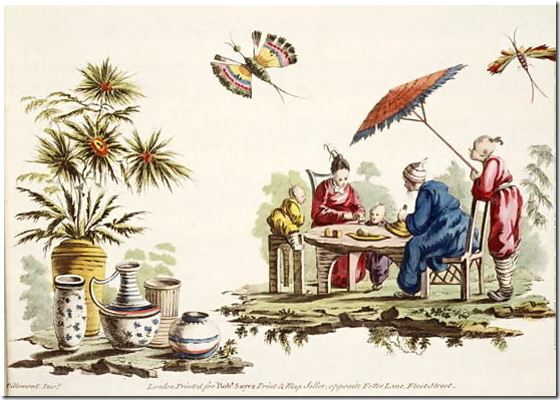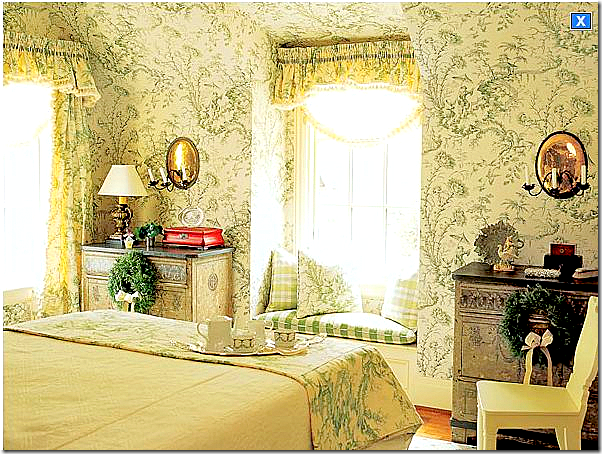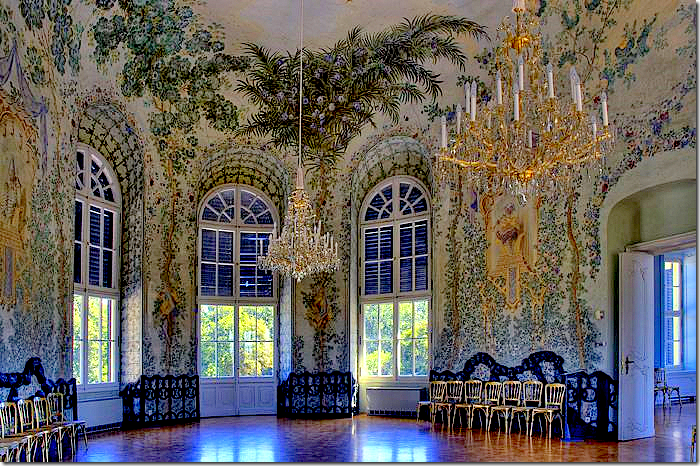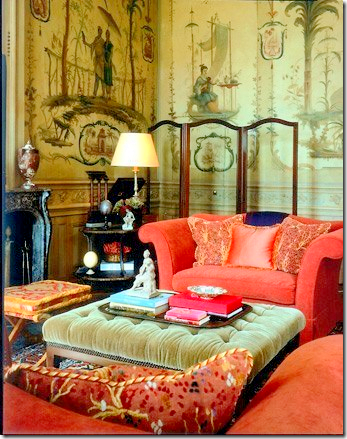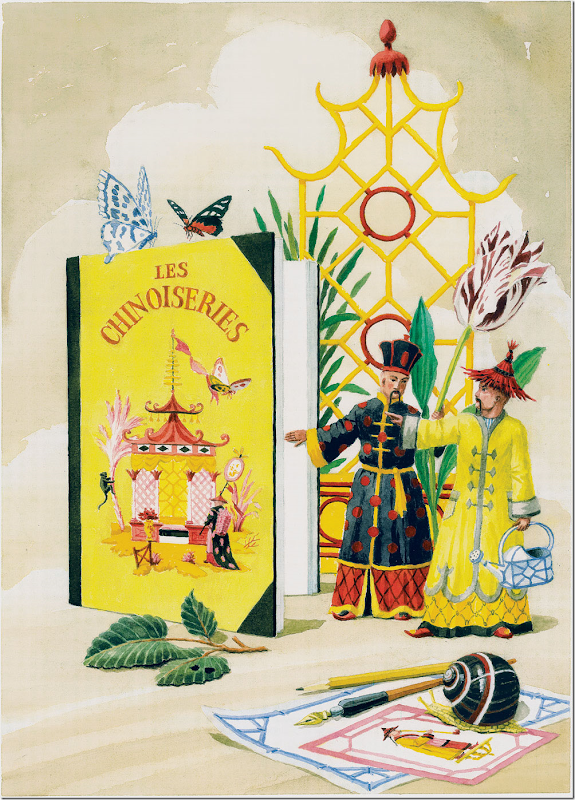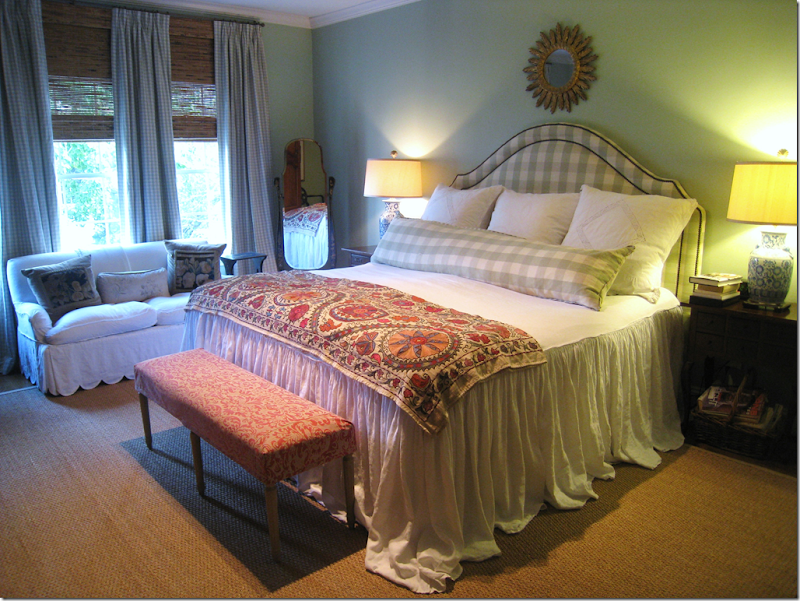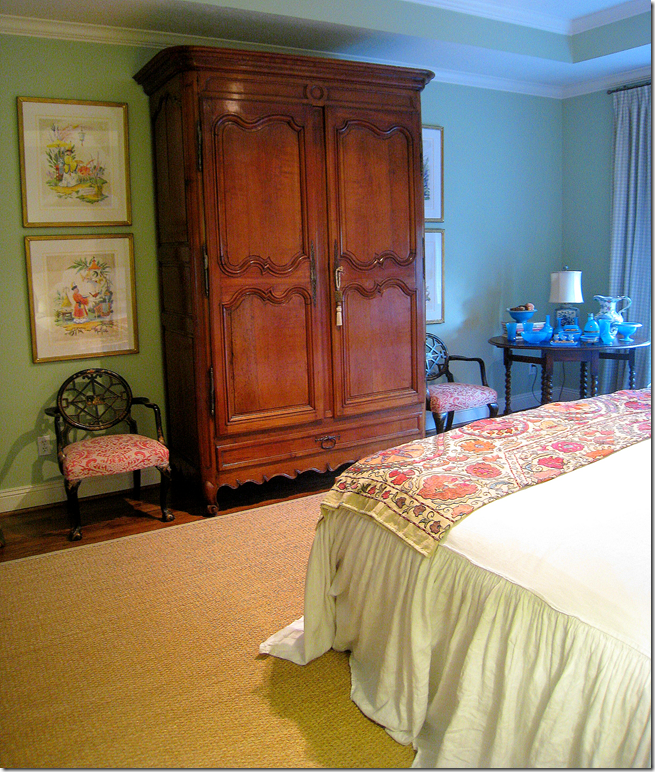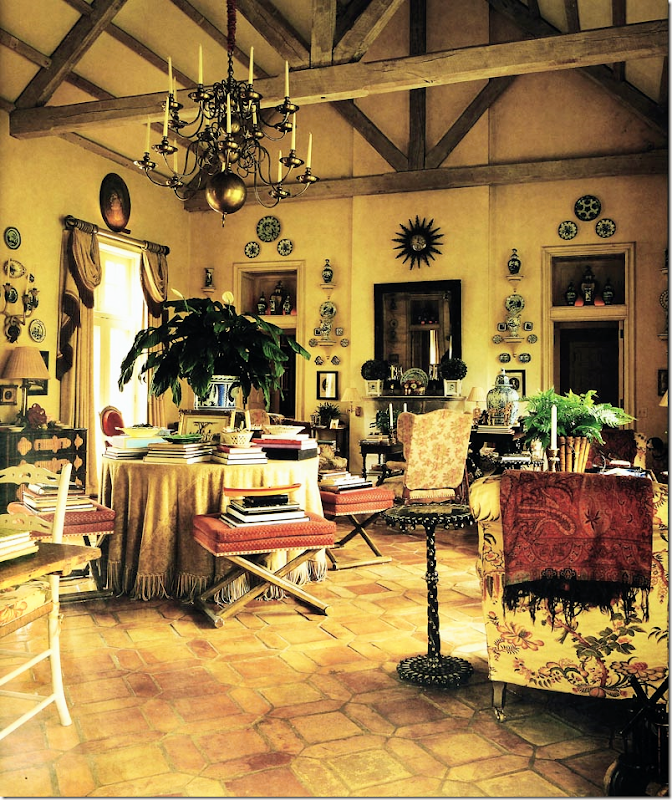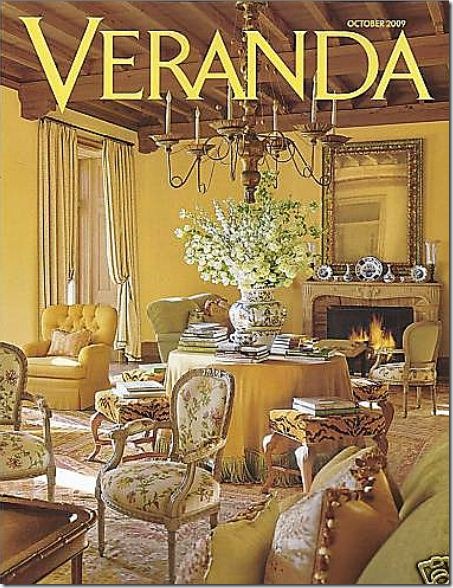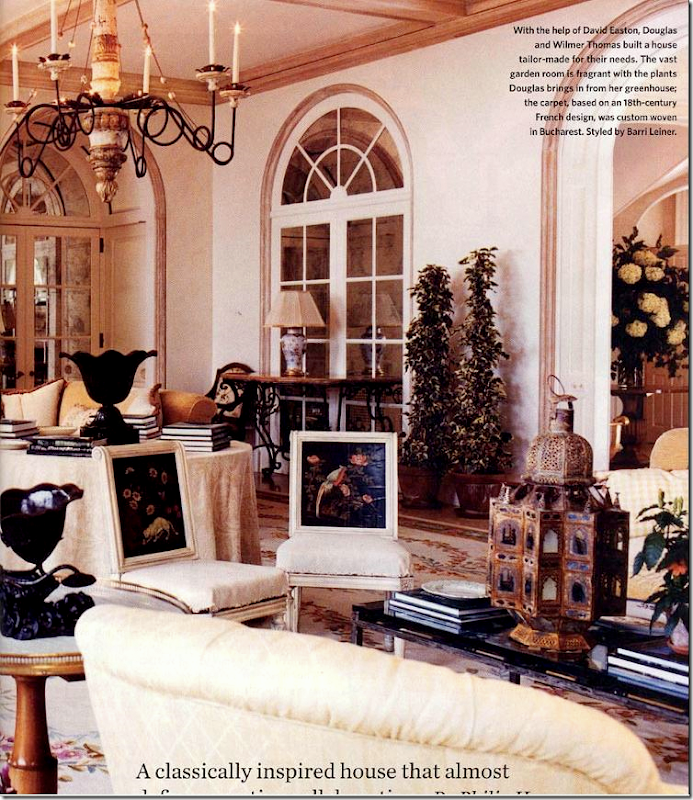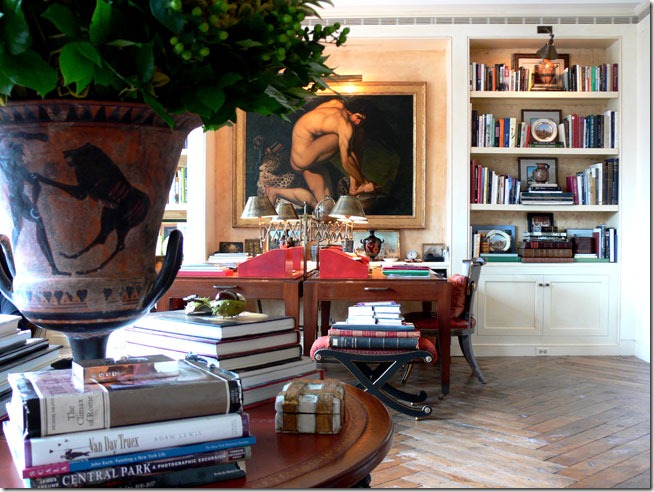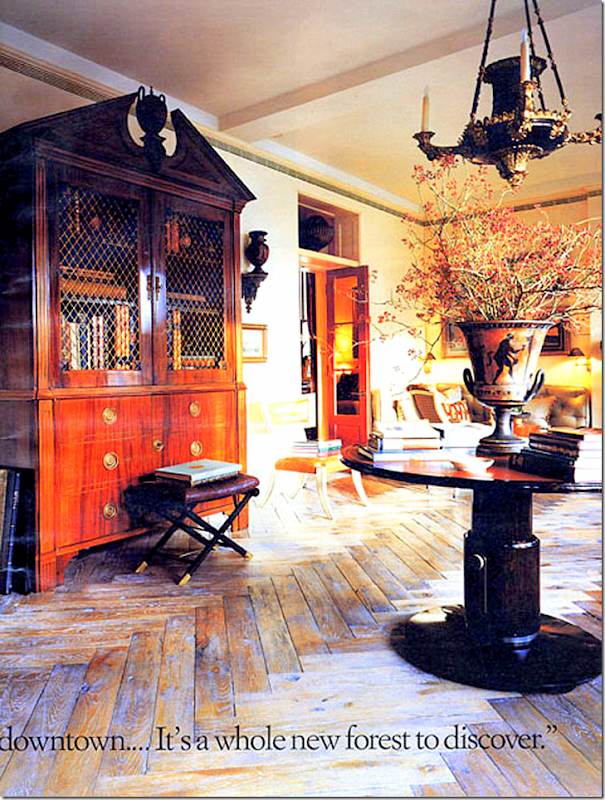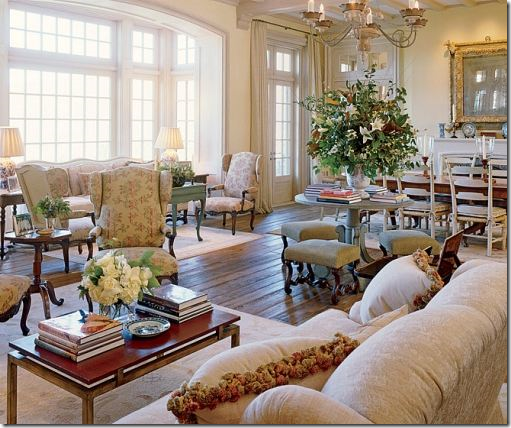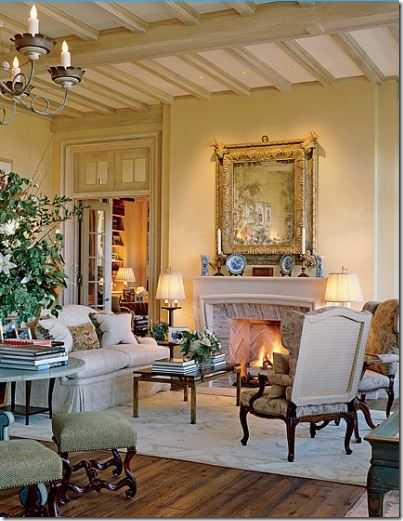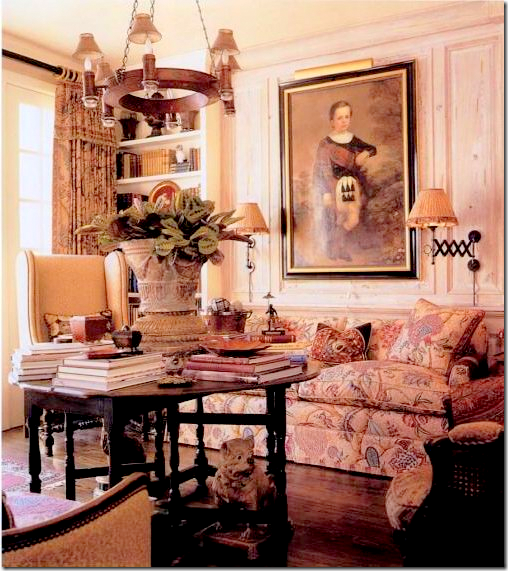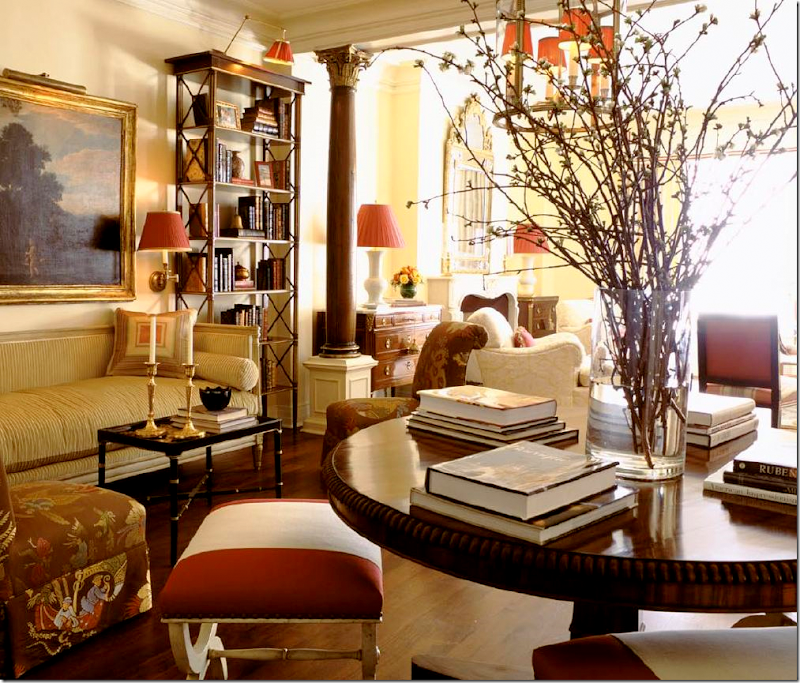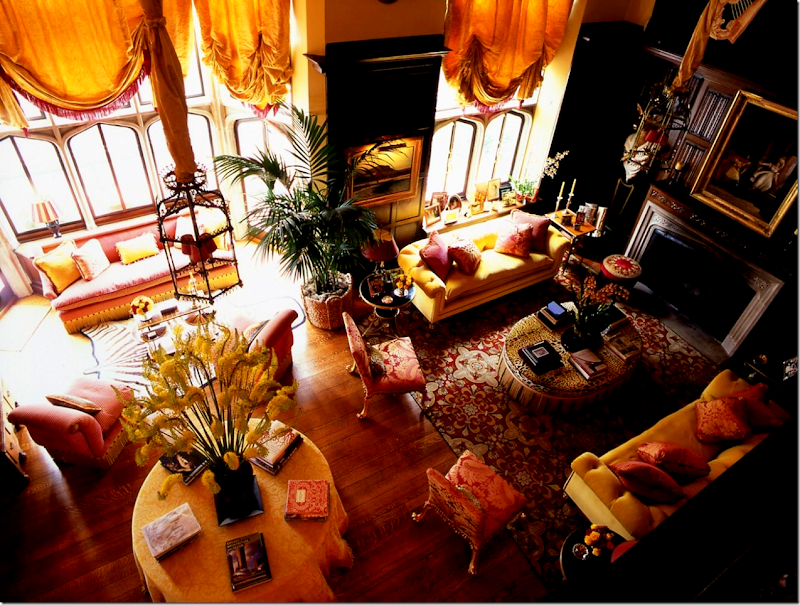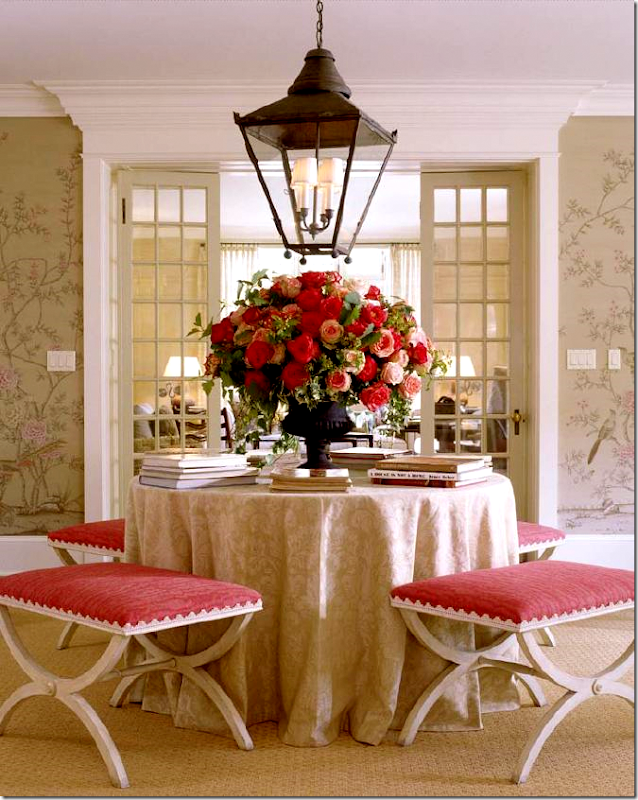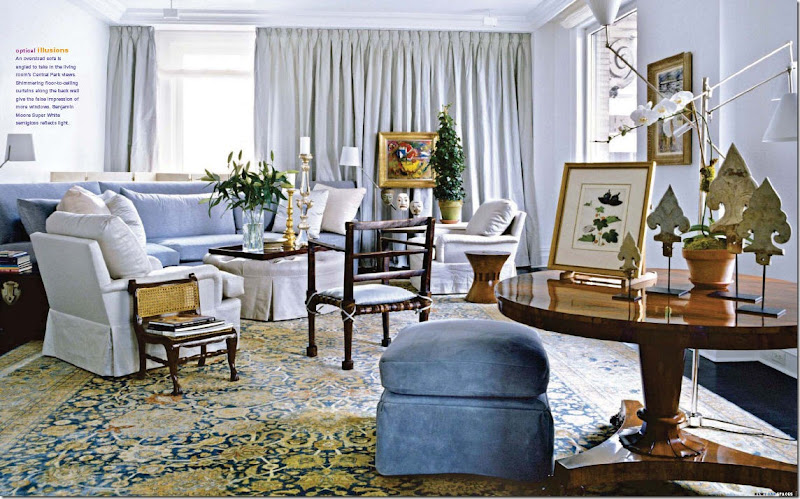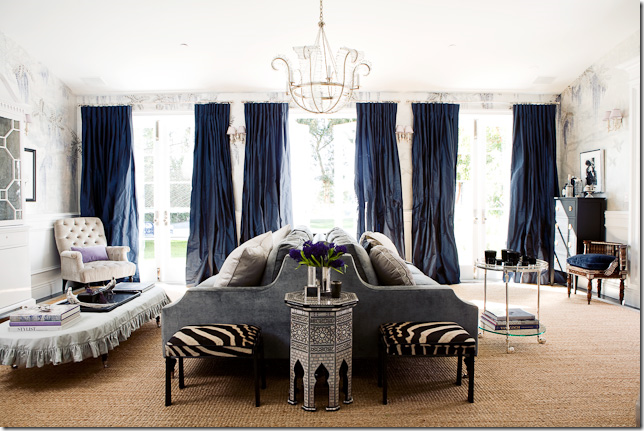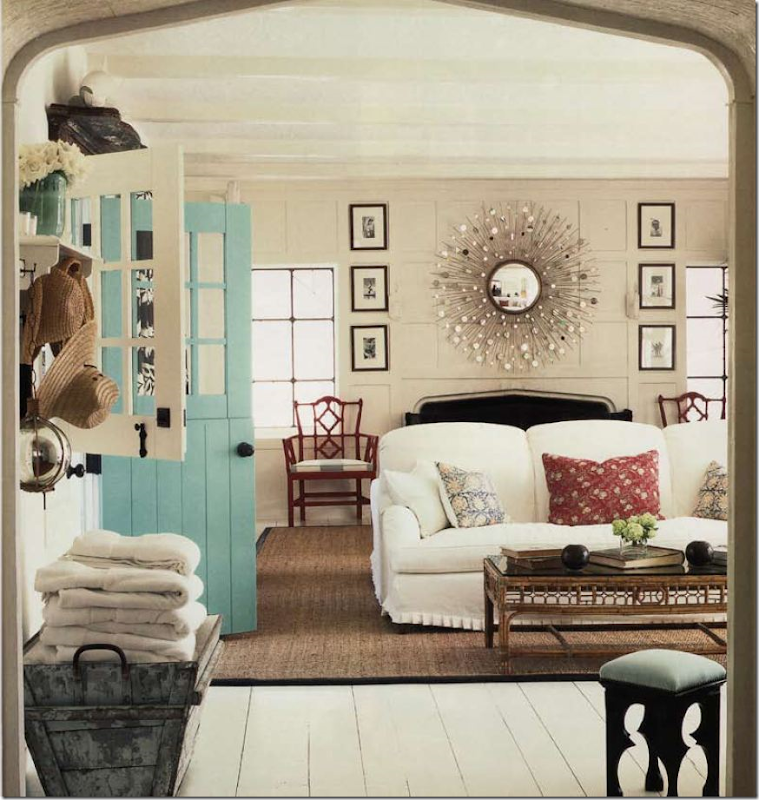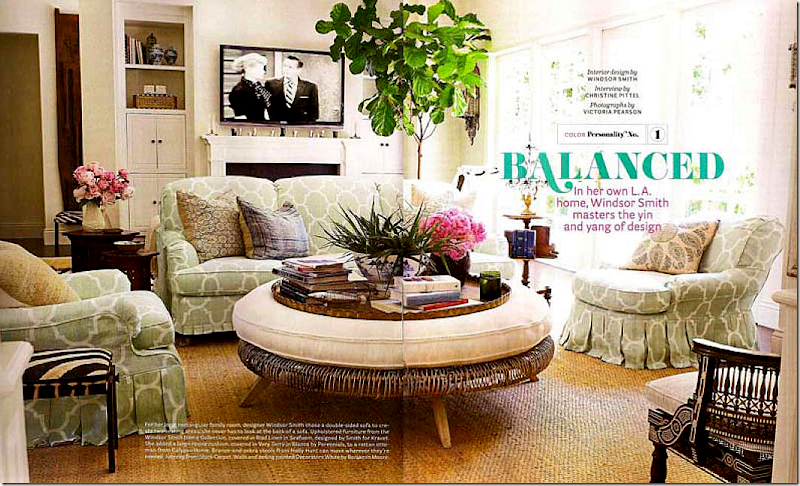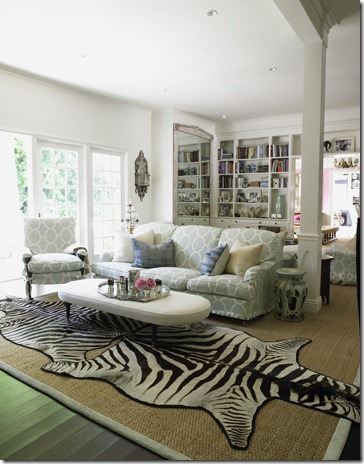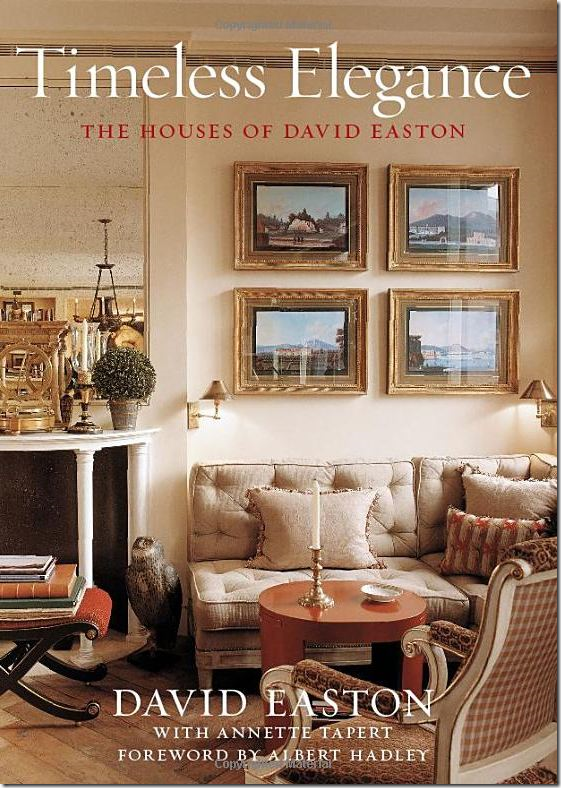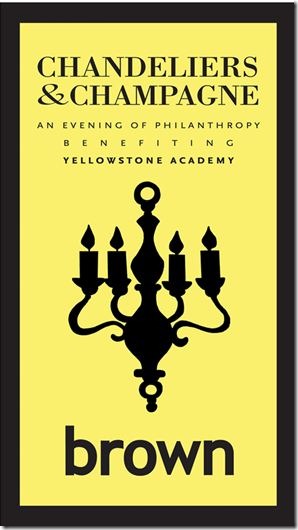Chinoiserie. OK. Don’t laugh. Every time I try to say the word OUTLOUD on the Skirted Roundtable, Megan cracks up laughing. Shin-wah-zer-eh. I think.
Definition of CHINOISERIE
a style in art (as in decoration) reflecting Chinese qualities or motifs; also : an object or decoration in this style
Origin of CHINOISERIE
French, from chinois Chinese, from Chine China
First Known Use: 1883
The origin of Chinoiserie dates back to the 1600-1700s when imports from China and Japan were extremely popular (not much has changed in the world.) At that time, owners of fancy houses sought out oriental lacquer, silk and porcelains brought back on ships from the mysterious Far East. This much beloved art form, most associated with Louis XV, peaked during the fanciful Rococo period: 1740 – 1770. One of the earliest and most famous painters in this style was Jean-Baptiste Pillement, whose engravings still inspire today. Scalamandre’s famous Pillement toile inspired by the artist is one example of his longevity. Interest in Pillement’s drawings helped to sweep Chinoiserie through the upper classes. Upscale mansions and castles had entire rooms dedicated to Chinoiserie design. Whimsical Chinoiserie follies and pagodas were built in gardens throughout Europe and Russia. Chinoiserie eventually lost popularity when Neoclassicism came into favor in response to Rococo’s frilly, feminine romanticism.
A rare and beautiful example of Chinoiserie: This red lacquered chest from Paris, dates to 1740. Gorgeous.
This beautiful corner cabinet is a period piece. I love these when used in a kitchen or powder room. Babs Watkins once used these in the upper corners of a kitchen in Houston. It was stunning.
A screen from the Chinoiserie period. 1st Dibs.
An museum owed original tapestry by Jean-Baptiste Pillement. Beautiful!!!!!
One of the more famous examples of a Chinoiserie interior is the Chinese Bedroom at Badminton House, Gloucestershire. The bedroom was completed in 1794, but in 1921, it was dismantled and sold off in pieces at Christie’s. Another bed was built in the 1920s to replace the original, sold one. Today the Victoria and Albert museum has recreated the famous bedroom.
The original Badminton Chinese bedroom mirror – bought by Doris Duke in 1965 and sold at Christie’s after her passing. The mirror used in the Victoria and Albert museum is not this one – but similar.
Interior designer Michael Smith recreated his own version of the Badminton bedroom with this pagoda styled bed.
Another lavish example of Chinoiserie interior design is the Royal Pavilion at Brighton Palace, built for King George IV while he was still the Prince Regent. While the exterior of the whimsical and exotic castle is Indian inspired, the main rooms inside are pure Chinoiserie. Here the Banqueting Hall is shown in a painting. Notice the large Chinoiserie figures painted along the walls.
On the more famous of the Chinoiserie follies is the Great Pagoda located in Kew Gardens. Built in 1762, there are 10 stories in the structure, each with its own Chinese styled roof. The structure was reopened to the public in 2006.
Built for Frederick II, the Potsdam Chinese Tea House is on the more important examples of Chinoiserie. Notice the charming figure on the rooftop.
A look at the gorgeous paintings in the rotunda of the Potsdam Chinese House.
Many of the original follies are no longer standing. Some were designed, but never built. In the 1990s, Michael and Dodo Cunningham-Reid bought 500 acres as a game sanctuary on the shores of Lake Naivasha, Kenya and built this nine story pagoda. Originally, they lived there, but it now available to rent on holiday. Amazing!
Today, Chinoiserie still influences interior design. Alessandra Branca uses touches of it in many of her designs. Here, in her NYC pied-a-terre, a large lacquered screen adds an element of Chinoiserie. The low coffee table is also Oriental.
In the same room, Branca uses a large 19th century Chinese armoire.
Here, in another apartment, an 18th century armoire is retrofitted into a bar. In the caption Branca describes the lacquering technique: 17 layers of lacquer, each a slightly different color, are added, after first being sanded. What a gorgeous bar!
Here, Henrietta Spencer-Churchill uses a screen featuring the art work of Pillement.
Here, one of a framed series of works by Jean-Baptiste Pillement. Pillement is the best known artist of the Chinoiserie period and continues to be the most influential today. Born in 1728, his work helped to spread the Rococo style throughout Europe. His early art was mostly romantic landscapes and he quickly caught the eye of royalty such as Maria Theresa, Marie Antoinette, King Pedro III, and the King of Poland, whom he worked for, sometimes painting entire rooms. He is most famous for his Chinoiserie drawings which were also used on porcelains and potteries and tapestries. He was quite prolific, and lived to be one month shy of 80.
An original work of art by Pillement.
An another.
Here is a detailed close up of the previous painting.
Pillement is still relevant today – his influence is wide. Scalamandre’s most popular toile, Pillement, is based on his work. Here, a bedroom by Alessandra Branca is wallpapered and curtained in Pillement Toile.
Interior Designer Phillip Sides also used the beautiful flowing Pillement Toile in this bedroom.
Schloss Niederweiden – painted entirely by Pillement!
Thomas Corrigan used original works by Pillement in this incredible living room at his French estate.
*******************************
OK OK OK – I KNOW this is a giveaway. I’m getting to the juicy part now!!!!!
One of my favorite prints by Harrison Howard is “The Fisherman.”
One artist today highly influenced by Pillement is Harrison Howard. The son of a famous artist himself, Howard works out of San Diego where he paints the most wonderful, imaginative works of art. Earlier in his career, he created murals, works of art and screens for the private houses of the rich and famous. Some of the finest interior designers have hired him to create custom murals along with series of art works. Today, his focus is more on smaller paintings, although he still takes on commissions. I first saw Howard’s work on The Peak of Chic blog HERE and being that we are both the same age and both have only children of the same age, Harrison and I became prolific email friends. Throughout countless discussions on design, child rearing and college choices, I had my eye on his wonderful art. It took me a while to decide exactly which one I wanted, but I finally picked out four of his famous Chinoserie prints. His art work entices. At first glance, it appears to be serious work until you look closely at the details and realize how whimsical they are: an Oriental beekeeper – working underwater amid all the corals AND blue and white porcelains, his basket filled with shells but no fish! Howard states that Pillement is an important influence in his work and that is easily seen, though Howard’s work seems more suited for today. His technique and ability is formidable. His imagination and talent fills up the canvas – leaving one wondering how does he conjure up these images???? Where do these ideas come from? They are so fanciful, so innovative – so charming. I gush.
Harrison Howard has a wonderful web site, set up for easy perusal of his many works of art. This week Howard is offering a 25% discount on all his limited prints. AND, Cote de Texas readers have the chance to win a print of their choice!!!!
Another personal favorite – “The Astronomer”
THE GIVEAWAY – DETAILS:
To enter this giveaway – all you have to do is go to www.harrisonhoward.com and pick out a print you like best. Come back to the comment section and let me know what you picked! I will choose a winner this Friday at 11:59 p.m. – so hurry up!!!!
OMG!!!! I could just die over how much I love this!!!!! Notice the prints under the pens! The characters walking out of the book – coming to life!!! Whoa! How does he think up these scenes??!!!
MY BEDROOM WITH MY OWN FOUR HARRISON HOWARD PRINTS:
My bedroom – facing the bed is an armoire where I wanted to hang the Howard prints.
On the opposite wall- besides the armoire, are the four prints, two on each side. It’s impossible to get a picture of all four together!
Looking at the other side.
***********************************************
REMEMBER: To enter the giveaway for the Harrison Howard print, go to the website www.Harrisonhoward.com and pick out your favorite print. Come back here and tell me which one you want in the comment section. You have until midnight Friday – so hurry!!!! AND remember also – that all prints are now on sale at 25% off.
And, Harrison – a huge thank you for your generosity!!!!!!! Thank you so very very much!!!


